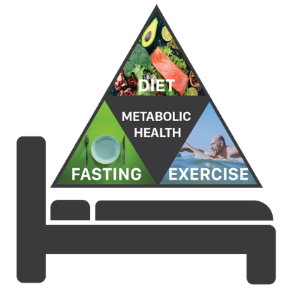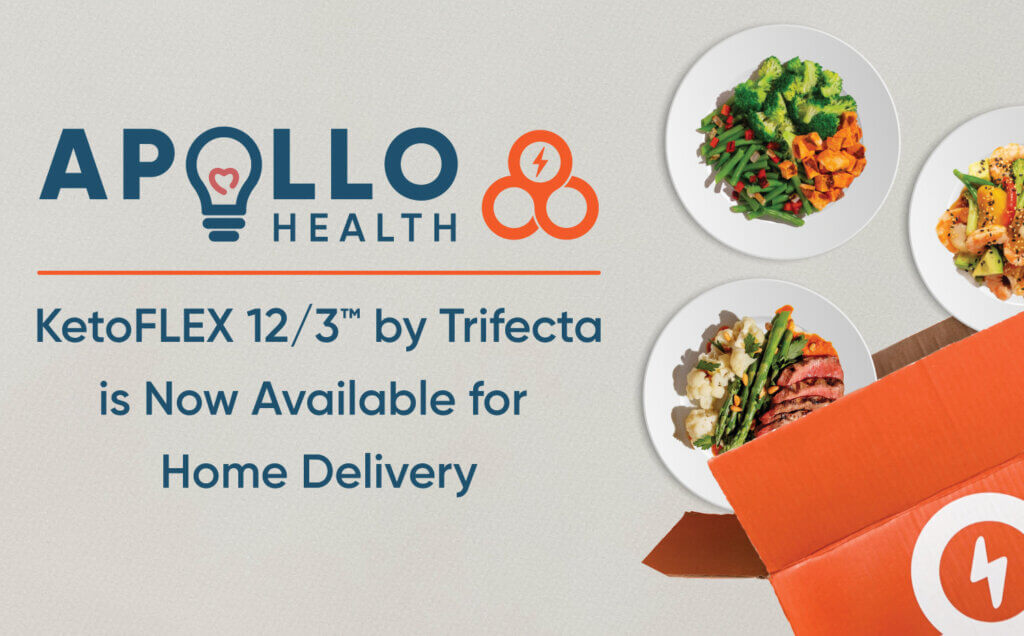April 15, 2022
Finding the Joy in “Food as Medicine”


By Julie Gregory, Chief Health Liaison for Apollo Health
As Dr. Bredesen’s recent clinical trial has demonstrated — food, in the context of the overall protocol, can be very effective “medicine.” Yet, some people worry that it may be a bitter pill to swallow. They express feeling so overwhelmed with all of the KetoFLEX 12/3 “rules” that they become afraid to eat anything for fear of eating the wrong thing. Fear is the last thing we want to instill; it falls on one end of a spectrum, with love on the other. At its core, food is love. Food is nurturing. Food is joy. We must keep these foundational ideas in place in order for our new way of eating to truly nurture us.
As infants, we were fed while being held, and we learned to associate food with love and a sense of well-being. We continue this legacy of nurturing with food as adults. We bring our loved ones together with food; we celebrate with food; we express sympathy or caring with food during times of illness or trauma.
Our ultimate goal is to mindfully choose foods that will truly nurture us, to fuel our bodies. That’s exactly what KetoFLEX 12/3 was designed to accomplish. We’ve created a diet that will not only nourish your body but that will also provide your brain with everything it needs in order to thrive. KetoFLEX 12/3 is a nutrient-dense, whole foods diet that prioritizes (preferably organic, local, and seasonal) non-starchy vegetables from every color of the rainbow, with an adequate amount of clean protein and a generous amount of healthy fat designed to promote metabolic flexibility to maximize the fuel supply to your brain

The KetoFLEX 12/3 Lifestyle
Five Ways to Find Joy with KetoFLEX 12/3
1. Congratulate yourself. You’re taking the most important step in healing by using the only diet clinically shown to reverse cognitive decline. Of all of the strategies in the Bredesen Seven, nutrition is by far the most impactful. The best part is that by eating healthier food, you’ll begin to heal other chronic health issues while regaining strength and energy. Your new way of eating will help to provide cognitive clarity and renewed health, making it easier to sustain these dietary changes for the long haul.
2. Make sourcing food an adventure. Become a modern-day hunter-gatherer. Check out nearby farmer’s markets, farms, and local health stores. See what’s in season while soaking up your local flavor. This is your chance to keep expanding your vegetable repertoire. Look for deeply pigmented vegetables representing every color of the rainbow to ensure broad phytonutrient exposure. Get to know your neighborhood vendors and farmers. Often you can find growers who use organic practices (without the official certification process) who will sell directly to consumers providing an excellent way to economize. If yogurt, kefir, eggs, poultry, or meat are offered, ask what the animals were fed and how much pasture time they’ve received. Your goal is to find products from 100% pastured animals who ate their natural diet. Don’t forget the big box stores; Costco and Sam’s Club have an excellent selection of flash-frozen wild-caught seafood, including sockeye salmon from Alaska.
3. Make meal preparation a celebration. Whether you’re cooking for yourself, your partner, or a group, make it a ritual that you anticipate. Turn off the TV, shut down your computer, and silence your phone. Open the windows, feel the breeze, and put on your favorite music. Find peace by solely focusing on the task at hand — slowly peeling and chopping the vegetables, combining them with your favorite herbs and spices. Try to get everyone who will be eating involved with food preparation. Research shows that smelling the food as it’s cooking releases pancreatic enzymes that will help you to digest the food.
4. Eat mindfully. Make mealtime a sacred practice where you take devoted time to nourish your body. With all electronic devices turned off, sit at a table to eat your food. Before eating, take a moment to express gratitude for all of the hands that brought this healing food to your table. Take a deep breath in with an even longer exhalation. This will help to activate your parasympathetic nervous system, allowing you to relax fully. Mindfully chew each bite until it is liquid. All of this will help to optimize digestion. Most importantly, remember that eating nourishing, healing food is the ultimate act of self-love.
5. Inspire the people around you. As you begin to heal — become stronger, cognitively sharper, and more energetic — the people around you will start to take notice and ask questions. Share the love by spreading the word. You can be the impetus to help your loved ones choose to adopt a healing lifestyle.
Depending upon your starting place, adopting the KetoFLEX 12/3 approach can be a major transition. We encourage you to use this transitional period as an opportunity to re-examine your relationship with food. When you’re feeling stressed, how does that affect the type of foods you choose or the amount of food that you eat? When you’re feeling happy or bored or lonely, how does that affect your food choices? If you’re struggling to replace emotional eating with consistently healthier food choices, consider working with a ReCODE 2.0 Certified Heath Coach. Apollo Health subscribers can use our Health Coach Locator Tool in conjunction with customer support at support@ahnphealth.com to find the health coach that will best suit your needs.






